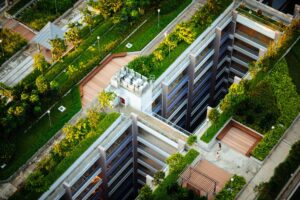

Discovering ecological achievements worldwide with EcoHubMap
Annually, the worldwide movement for environmental conservation acquires impetus, resulting in the formation of multiple ecological Green spots on Earth. These locations range widely in size from large areas encompassing entire regions to smaller but no less significant initiatives scattered across rural and urban environments. Each of these green spaces, albeit varying in size, is essential to advancing sustainability and protecting the environment.
A special area of the extensive platform EcoHubMap, which is devoted to environmental projects, features these green spaces. It acts as a holding place for the initiatives of committed people and groups that won’t take a back seat to environmental deterioration. EcoHubMap offers a venue for exhibiting and commemorating the accomplishments of these green initiatives and environment initiatives through thorough documentation and frequent updates.
The common goal of reviving and restoring ecosystems that have been damaged by human activity is what motivates the establishment of ecological green spaces. Additionally, the creation of completely new ecosystems that benefit the local community and environment is the goal of these programs. Every project advances the overall objective of environmental innovation and conservation, whether it be through creative waste management techniques, the reforestation of degraded land, the revitalization of metropolitan areas with green infrastructure, or energy generation worldwide.
These green spots are divided into multiple categories by EcoHubMap, each of which stands for a different facet of environmental stewardship:
- Water Generation and Purification. Projects aimed at supplying readily available, pure water—a necessity for the survival of all living forms—fall under this category. These programs, which range from campaigns to preserve and replenish freshwater resources to cutting-edge methods of cleaning tainted water with water generation from the air and water purification machines, are essential for guaranteeing water security and preserving ecosystems.
- Land Restoration and Reforestation. Projects falling under this heading aim to restore natural environments that have suffered from urbanization, deforestation, and other human-caused degradation. These programs aim to reverse environmental harm and promote biodiversity conservation through habitat restoration projects, restoration of land efforts, and sustainable land management techniques like forest restoration and reforestation.
- Urban. This category highlights the ways that cities globally are using green infrastructure to boost air quality, increase biodiversity, and provide green areas for leisure and relaxation. These projects, which range from urban parks and green corridors to rooftop gardens and green roofs, highlight how crucial it is to incorporate nature into urban settings in order to improve sustainability and livability.
- Energy. This category showcases successful renewable energy initiatives like hydroelectric, solar, and wind. Through the shift from fossil fuels to clean, renewable energy sources, these initiatives contribute significantly to global energy output, lowering greenhouse gas emissions and lessening the effects of climate change.
- Waste Management. Initiatives tackle the intricate problems associated with the production and disposal of trash, emphasizing the removal of waste and the reduction, reuse, and recycling of materials to reduce the impact on the environment. These projects support a circular economy where resources are used more wisely. They range from creative waste-to-energy technology to neighborhood-based recycling programs.
- Climate. Initiatives to lessen the effects of climate change, such as carbon sequestration, afforestation, and climate adaptation strategies, are included in climate-focused projects. These initiatives assist in shielding vulnerable communities and ecosystems from the escalating consequences of climate change by putting into practice strategies to lower greenhouse gas emissions and increase resilience to climate-related hazards.
- Biodiversity. Successfully restored and revitalized ecosystems are known as biodiversity green spots. These green spaces, which range from protected wildlife habitats to restored wetlands and forested areas, represent human efforts to recover and maintain biodiversity in the face of environmental degradation.
Every green spot that is highlighted on EcoHubMap offers comprehensive details, such as the particular environmental issue being addressed, the creative solution that has been suggested, updates on project progress, and a list of the organizations or people working on the project. EcoHubMap encourages and enables communities and governments to take action in tackling environmental concerns and constructing a more sustainable future by disseminating these success stories and best practices.
These eco-aware areas inspire people worldwide in addition to providing practical local models of environmental management. Through showcasing the observable advantages of environmental innovation, eco-innovation, as well as environmental achievements, they inspire governments and communities globally to imitate their success, cultivating a global network of sustainable regions dedicated to protecting the environment for coming generations.